Introduction
An earthquake is one of the worst natural disasters on our earth. We think that the ground we stand on is very stable, but it isn’t. It moves quite a lot. In the last few decades scientists have been able to find out why earthquakes happen.
Earthquakes happen when there is a sudden vibration in the earth’s crust. It’s like a large lorry that travels down your street. When it passes by, you feel your house shake.
Earthquakes can be caused by a lot of things :
- Volcanoes that suddenly erupt
- Meteorites that hit the earth
- Underground explosions
- Buildings that fall apart
But most earthquakes happen because the Earth’s plates move.
In the middle of the 20th century scientists found out that continents do not always stay in the same place. They have been moving on plates for millions of years. The earth’s surface is made up of many such plates. Where two plates meet magma comes out of the inner part of the Earth . These areas are called faults—breaks in the Earth’s crust.
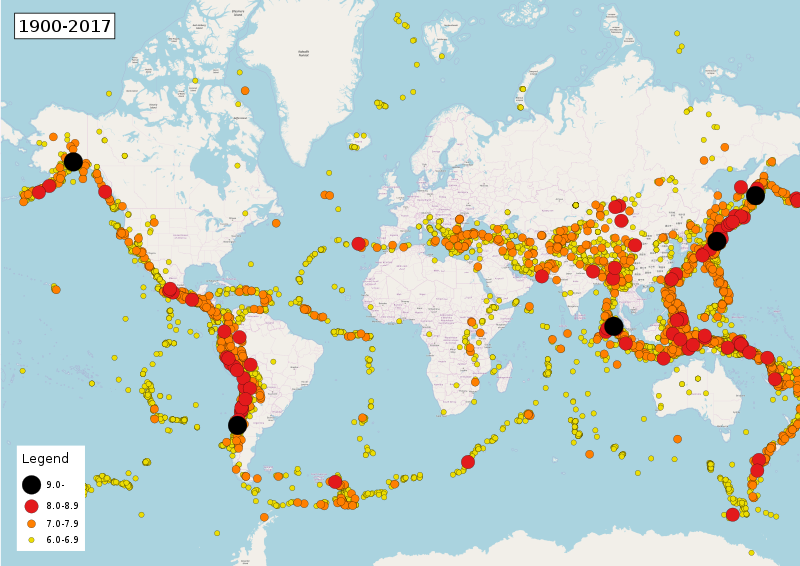
Map of earthquakes 1900 – 2017 and their magnitudes
Image: Phoenix7777Own workOpenStreetMap contributors, CC BY-SA 4.0, via Wikimedia Commons
How Plates Move
When two plates move away from each other lava or magma comes out of the earth. Most of this happens at the bottom of oceans, where the earth’s crust is very thin. Lava cools down when it reaches the water and underwater mountains are formed.
When plates push towards each other—one of them slides under the other. Rocks are pushed up and new mountains are formed.
Some plates slide past each other— for example, one moves north and the other moves south . When these plates move along faults a lot of energy is released and the biggest earthquakes happen.
We only hear about earthquakes once in a while , but they really happen every day. There are more than 3 million earthquakes every year—about 8,000 every day or one every 11 seconds.
But most of them are very weak or they happen in places where nobody lives. Some of them take place on the sea floor.
Where Earthquakes Happen
Earthquakes occur all over the world but there are places where they happen more often. Big earthquakes can be found where plates meet.
80% of the world’s earthquakes happen around the Pacific Ocean—near the east coast of Asia and the west coast of America. Japan has over 2,000 earthquakes every year and California and South America are also very active earthquake zones. The edge of the Pacific Ocean is also called the “Ring of Fire” because there are also many active volcanoes in this region.
The Pacific Ring of Fire
Image: Gringer (talk) 23:52, 10 February 2009 (UTC),
Public domain, via Wikimedia Commons
Earthquake Waves
When there is a sudden movement in the earth’s crust, energy moves in the form of waves . It’s like dropping something into water.
Body waves move through the inner part of the Earth and surface waves travel over the earth’s surface. Body waves can travel very fast—up to 8 km a second. They travel through rock , water and gas . When they reach other places on the Earth’s surface they can be registered there. They are usually the first waves to get to the surface. Surface waves cause the most damage, but they move very slowly. These waves come at the end of an earthquake.
Man-made Earthquakes
Sometimes people can make earthquakes happen. They can fill man-made lakes with water after building a dam—or they test atomic bombs underground. Some of these tests can help scientists find out how quakes happen.
How Earthquakes Are Measured
With a machine called a seismograph scientists can tell where an earthquake happened and how strong it was.
The place in the Earth where the movement takes place is called the focus or hypocentre. From here, waves start to spread out in all directions. This focus can be very near to the surface or it can be hundreds of km below it. The area on the surface exactly above the focus is called the epicentre. This is the place where the waves hit first and where the most damage is done.
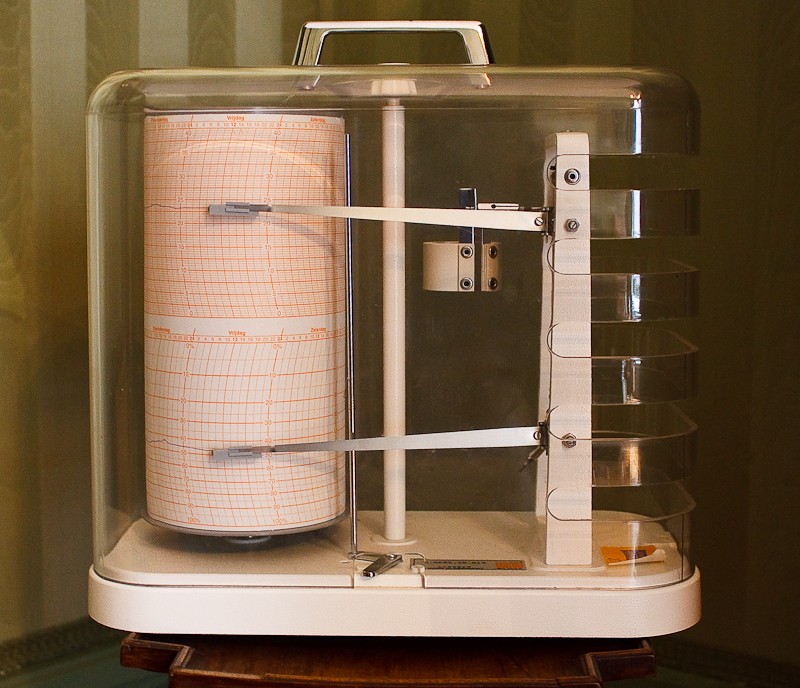
Seismograph
Image: MicheleLovesArt, CC BY-SA 2.0,
via Wikimedia Commons
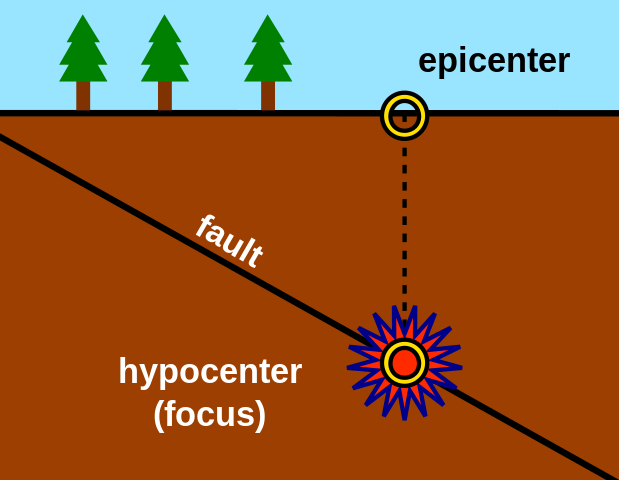
Epicenter and Hypocenter
Image: AnsateSam Hocevar (original author; this is a derivative work)User:TFerenczy create SVG version; cs translationUser:NikNaks es translationUser:Lies Van Rompaey nl translationUser:Rostik252004 ru translationUser:Ата uk translation, CC BY-SA 1.0,
via Wikimedia Commons
Whenever an earthquake hits us you hear how powerful it is. The Richter Scale is used to rate the magnitude of earthquakes. Small quakes have a rating of under 4. You won’t see a lot of damage here. Medium-sized earthquakes reach between 5 and 7 on the scale, and the really big ones are above 7. The largest earthquake that has ever been registered was at 9.5 on the Richter scale.
There are more than 100 seismograph stations all over the world. When the Earth shakes seismologists compare the information they get and then they can tell where the earthquake really happened.
Effects of Earthquakes
Earthquakes make the ground move. Buildings shake and many of them collapse. Landslides also happen when rocks get loose.
Another danger is fire. In 1906 San Francisco was hit by a big earthquake and many houses burned down because they were made of wood.
When an earthquake occurs on the sea floor, big waves – called tsunamis—hit the coast. They often come without any warning and they kill many people and destroy buildings and streets near the coast.
Earthquakes also can lead to diseases, especially in developing countries. When water supplies are destroyed people don’t have safe water to drink. Sometimes earthquakes also hit hospitals where injured people are treated.
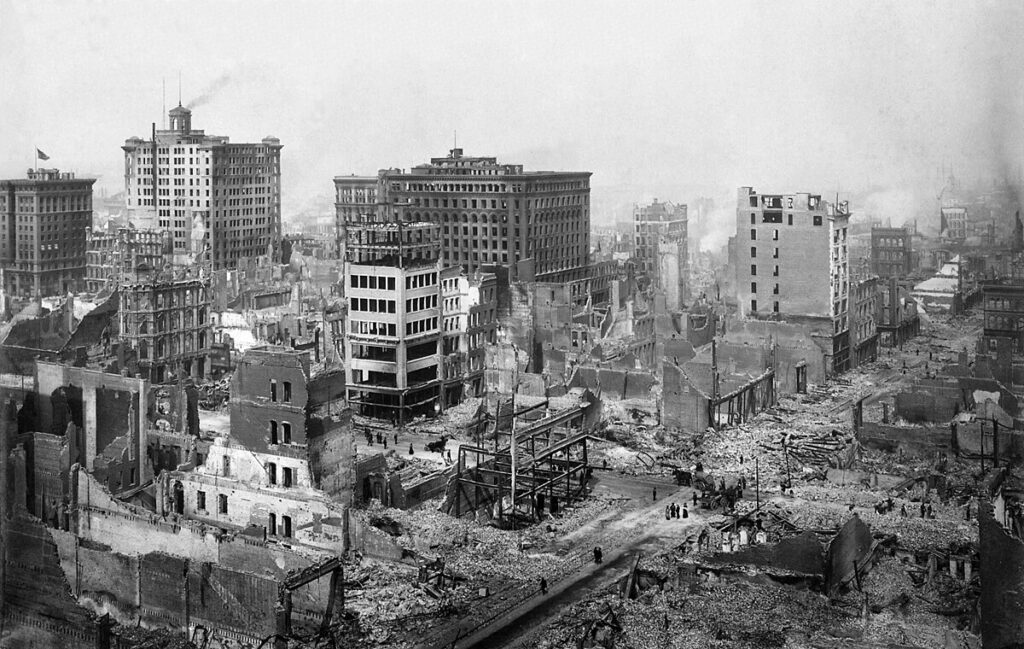
San Francisco earthquake in 1906
Image: Chadwick, H. D , Public Domain via Wikimedia Commons
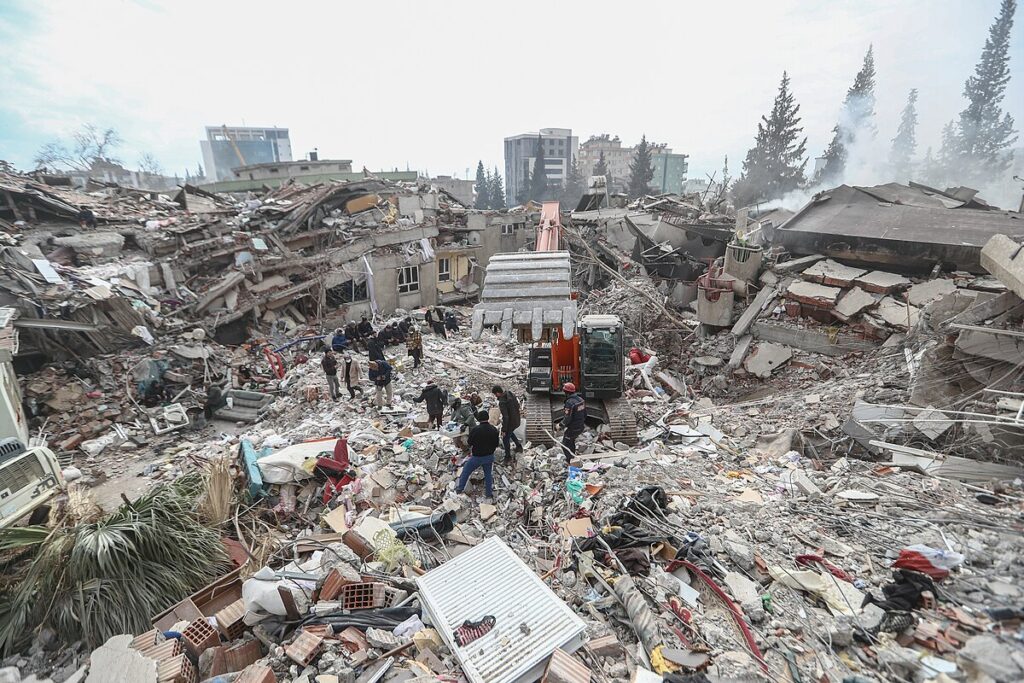
Destroyed buildings after the Turkey – Syria earthquake in 2023
Image: Əziz Kərimov (VOA), Public domain, via Wikimedia Commons
The Greatest Earthquakes in History
-
856
200,000 people are killed in one of the deadliest earthquakes in history in Damghan, Iran.
-
1138
An earthquake in Aleppo, Syria kills 230,000
-
1556
The deadliest earthquake in history hits Shensi province in China. Almost 1 million people are killed.
-
1755
The most serious earthquake in Europe hits Lisbon, Portugal. The whole city is destroyed. About 70,000 people get killed.
-
1906
The city of San Francisco is hit by a large earthquake. A big fire destroys most of the city. About 500 people die.
-
1908
Messina, Sicily is totally destroyed by a large earthquake . About 70,000 people are killed.
-
1923
Tokyo, Japan is destroyed by an earthquake with a magnitude of 8.3 . 150,000 people are killed.
-
1960
The strongest earthquake ever recorded hits Chile. It reaches 9.5 on the Richter scale. 20,000 people die.
-
1964
The strongest earthquake in North America hits Anchorage Alaska. Ocean waves reach a height of 20 metres. 200 people are killed.
-
1976
The biggest earthquake ever recorded in China leaves 242,000 people dead.
-
2004
Indian Ocean earthquake followed by a tsunami that kills 250 000 people.
-
2010
160 000 people die in an earthquake on Haiti.
-
2011
A 9.1 earthquake – the strongest ever recorded in Japan – hits the country’s east coast and causes the Fukushima nuclear disaster